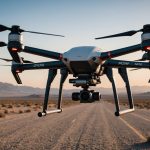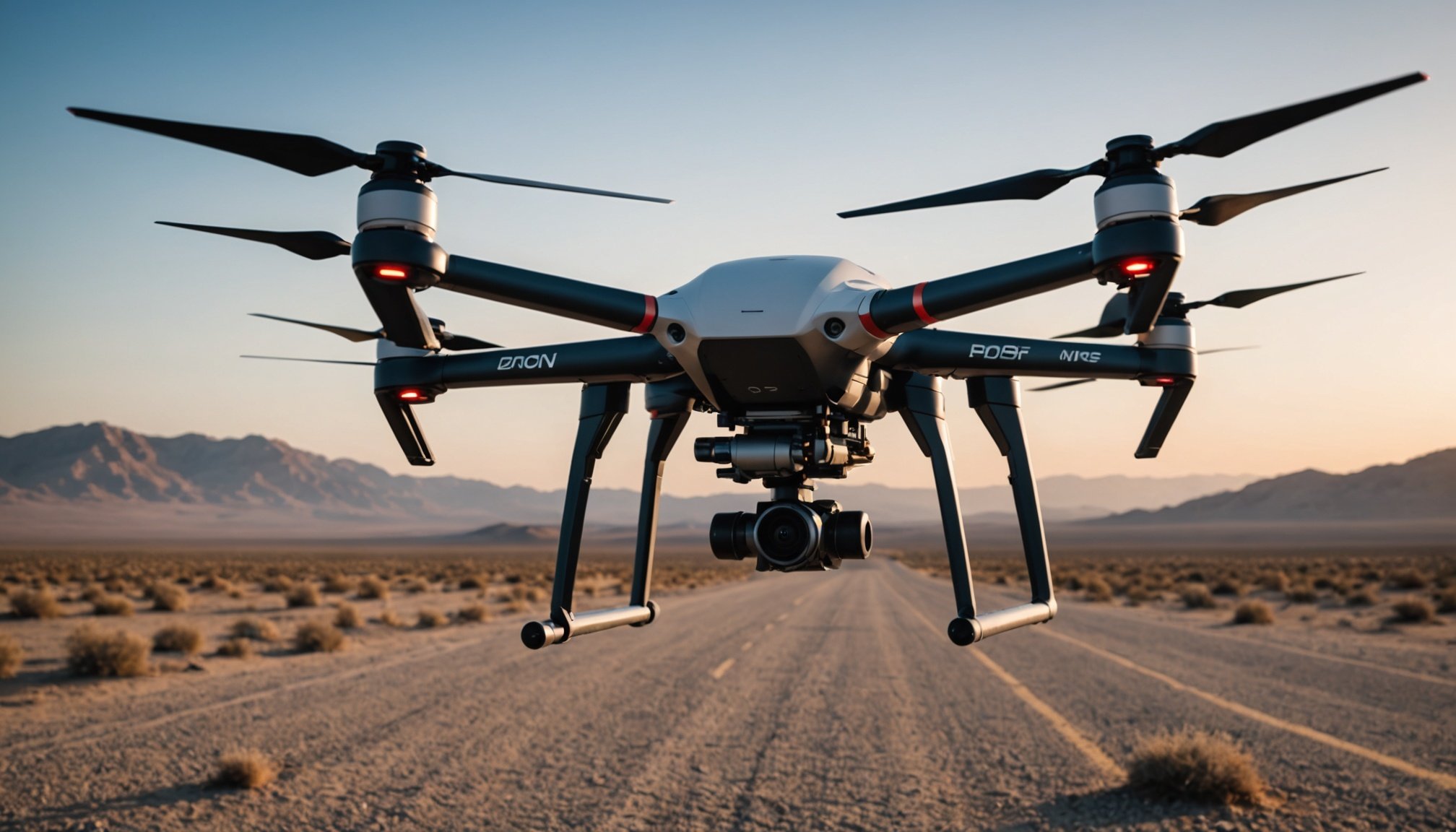Overview of Autonomous Drone Technology
Autonomous drones are transforming industries with innovative technology and artificial intelligence (AI) at their core. These drones operate without direct human control, relying on a suite of advanced components that enable independent navigation and task performance. The evolution of drone technology has seen substantial advancements in both hardware and software, with autonomous drones at the forefront.
Key components driving this autonomy include high-precision GPS systems, advanced sensors, and sophisticated onboard computers. These technologies collectively enhance a drone’s ability to perceive its environment, make decisions, and execute tasks with minimal human intervention. Importantly, AI plays a crucial role in enhancing the performance of these drones, improving their ability to adapt to changing conditions and carrying out complex missions.
Have you seen this : Unlocking Supply Chain Excellence: Your Ultimate Guide to AI-Driven Predictive Analytics in Logistics
AI in drones enables them to analyze data in real-time, optimizing flight paths and responding effectively to obstacles or new information. Machine learning algorithms enhance the drone’s decision-making abilities, learning from past experiences to improve future operations. The integration of AI not only boosts operational efficiency but also expands the capabilities of drones, making them indispensable tools in areas like surveillance, agriculture, and logistics. Such advancements ensure that autonomous drones remain at the cutting edge of technological progress.
Proven Techniques to Boost AI Performance
AI optimization in autonomous drones has spearheaded significant advancements in their performance enhancement. Machine learning algorithms are at the core, enabling drones to adaptively learn from operations, thus optimizing their performance. These algorithms process tremendous amounts of data, learning and refining flight paths while enhancing decision-making efficiency. Real-world data inputs allow drones to anticipate environmental changes and modify their routes, enhancing operational efficacy in various scenarios.
This might interest you : Unlocking Serverless Success: Your Comprehensive Guide to Efficient Monitoring and Logging Strategies
Data processing techniques play a vital role, allowing autonomous drones to analyse information in real-time. This capability supports real-time decision-making, which is essential for dynamic operational environments. The integration of sensor technologies further amplifies a drone’s situational awareness, furnishing comprehensive environmental assessments and elevating its navigational precision.
For instance, sophisticated cameras and LIDAR sensors supply crucial data about terrain, obstacles, and other variables, contributing to more informed and accurate path planning. This results in drones executing tasks with increased reliability and efficiency. Each component of AI optimization and data processing intertwines, collectively pushing the boundaries of what autonomous drones can achieve in complex and demanding contexts.
Case Studies in Autonomous Drone Optimization
Autonomous drones are revolutionizing diverse industries through real-world applications. One notable sector benefitting from these advancements is agriculture, where drones enhance crop management significantly. By employing aerial surveys, drones provide detailed data on soil conditions, crop health, and pest infestations, enabling precise interventions and boosting yield efficiency.
In delivery services, autonomous drones are transforming logistics. Companies are utilizing drones for fast and efficient delivery, reducing operational costs and improving service reliability. This innovation has proven particularly useful in remote areas where traditional delivery methods may falter, showcasing the extreme utility of autonomous drone technology.
The integration of enhanced AI in search and rescue applications has also highlighted the success stories of autonomous drones. Enabled by machine learning, drones rapidly identify human signatures in disaster-stricken areas, contributing to life-saving interventions. These case studies demonstrate both the versatility and effectiveness of drones in overcoming significant challenges faced and overcome during their development.
Throughout these sectors, the optimization strategies employed have not only improved efficiencies but also paved the way for pioneering advancements within the drone industry. The impact of these successes is substantial, promising a future rich with innovation.
Expert Opinions and Insights
Gleaning insights from industry experts unveils the nuanced trajectory of drone innovation. Experts emphasize the pivotal role of AI expertise in advancing drone technology. Innovations in machine learning are key, enabling drones to evolve beyond mere data collection drones into intelligent, adaptable entities.
These expert opinions foster an understanding of future trends in autonomous drones. One significant prediction is the integration of drones in urban air mobility, which could revolutionize transportation. Additionally, advances in AI promise refined algorithms, enhancing drone adaptability in complex environments. However, experts also highlight the importance of addressing ethical concerns. The use of AI in drones raises questions about data privacy and autonomous decision-making.
Regulatory challenges are equally pressing. Establishing a robust framework is crucial to ensure safety and ethical standards. Collaboration among stakeholders—ranging from aerospace engineers to policymakers—is viewed as essential in overcoming barriers and promoting responsible innovation. By prioritizing data security and ethical usage, the industry aims to unlock the full potential of drone technologies. This expert-driven perspective provides a roadmap for a sustainable, innovative future in drone technology.
Future Challenges in Enhancing AI for Drones
Navigating the future landscape of drone evolution presents challenges that require robust solutions. One major issue is the technological challenges stemming from the current limitations of AI technologies. While AI has significantly advanced drone capabilities, there remains a significant gap in achieving human-level understanding and decision-making agility in complex environments.
Data privacy and security are increasingly concerning as drones collect vast amounts of sensitive data. Securing this data while ensuring it is used ethically is essential to maintaining trust and adherence to regulatory frameworks. Moreover, public apprehension surrounding autonomous operations necessitates transparent data handling procedures.
Overcoming these barriers mandates dedicated efforts in research and development. Continued innovation is crucial to improving AI algorithms, enabling drones to perform complex tasks with higher precision. Additionally, fostering collaboration among tech developers, regulators, and users will aid in addressing barriers to innovation.
Looking forward, there is a pressing need to strategize the integration of advanced AI in drones while ensuring compliance with evolving legal and ethical standards. Meeting these future challenges will unleash the full potential of drones, revolutionizing industries and reshaping societal norms.
Conclusion and Future Outlook
Exploring the potential of autonomous drones reveals a promising horizon where AI advancements redefine drone capabilities. The consistent evolution of AI technologies stands as a cornerstone, enabling drones to transcend beyond traditional boundaries into roles once deemed impossible. The continuously expanding potential of drones lies in the synergy of advanced machine learning, real-time data processing, and robust sensor technologies, all of which consolidate the drone’s performance and operational efficiency.
As the industry advances, the collaboration among researchers, developers, and policymakers becomes paramount. This cooperation not only tackles current technological challenges but also sets a harmonious framework for emerging applications. Proactive governance and ethical considerations ensure autonomous drones are utilized safely and responsibly.
Looking ahead, the impressive trajectory in AI technology promises further breakthroughs. Innovations in drone evolution could markedly affect numerous sectors, from transportation to logistics, reshaping societal norms. However, it’s crucial to maintain a focus on overcoming barriers to innovation, such as ensuring data privacy and security. Continued research and development will be the backbone of this progression, pioneering future achievements that redefine the industry and enhance its societal contributions.







